With just 4 square feet of gardening space, you can grow all the vegetables you need with this efficient gardening method!
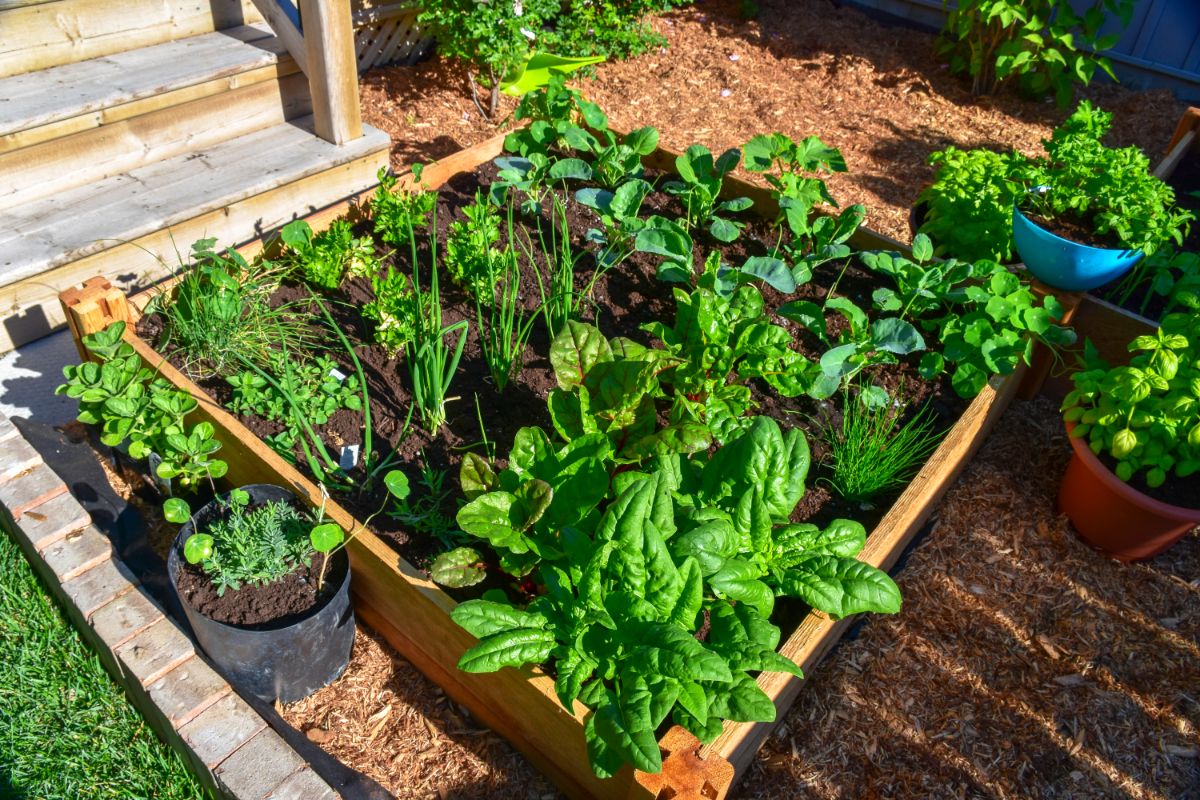
Square-foot gardening is a gardening technique that has been gaining popularity since the 1980s. First mentioned by Mel Bartholomew in his groundbreaking book, square-foot gardening utilizes clever space-saving techniques, companion planting, and careful planning to maximize yields in even the smallest garden beds.
If you have a small backyard or even just a patio, you can still grow lots of vegetables in a square-foot garden. In fact, these gardens can be even more productive than row-planted beds.
But if you’re new to square-foot gardening, you may not know where to start. That’s why we’ve created this easy primer that will teach you everything you need to know to create your own square-foot garden and grow an impressive harvest in just a few square feet of growing space!
Jump to:
Benefits of square-foot gardening
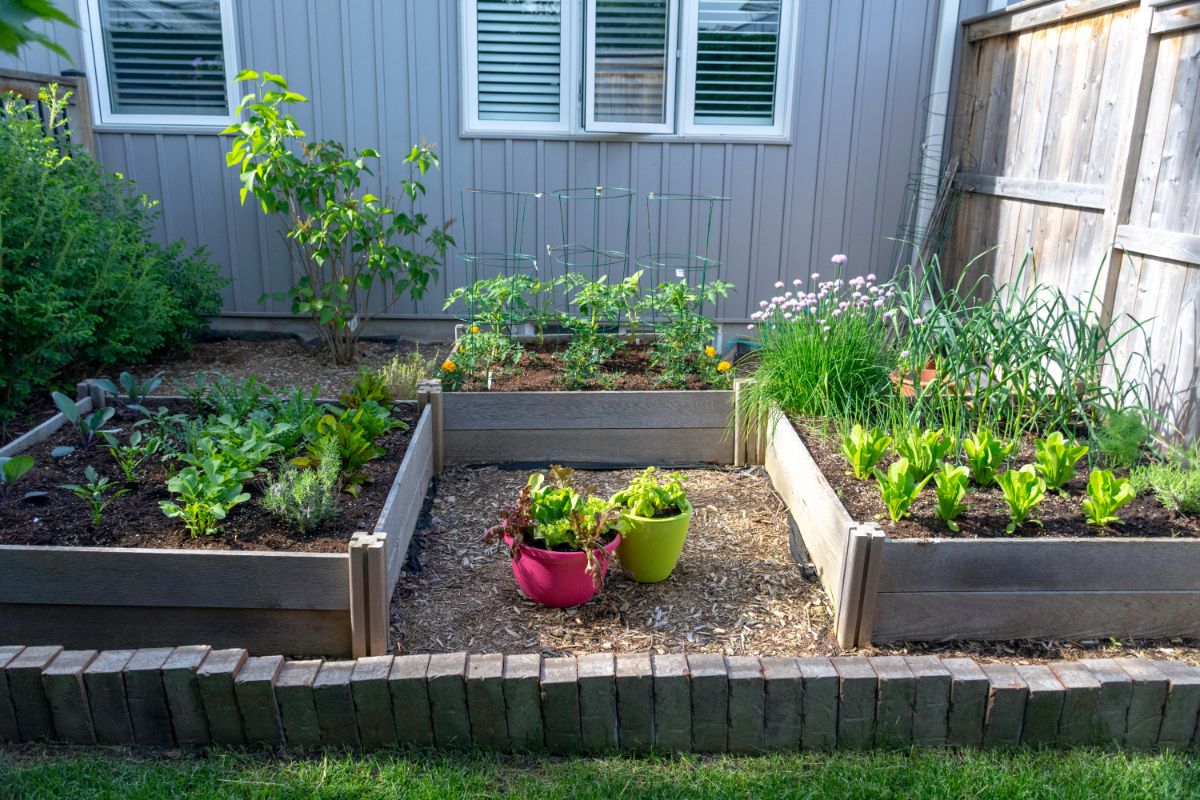
Traditionally, vegetables have been grown in rows, but square-foot gardening offers an alternative. Instead, with this space-saving method, plants are sown in a grid-like pattern based on plant size and spacing considerations. This allows growers to garden in small spaces and offers other benefits as well!
More efficient
Square-foot gardening makes the most of the space you have and allows you to grow a large harvest of fruits and veggies in a smaller area. When compared to traditional row planting, you can grow as many veggies (or even more!) in a small square-foot garden. Even better, since these gardens are so compact, they are much easier to cover with floating row covers and drip irrigation systems.
Small space friendly
Even if you have a very small yard or just a patio, you can still keep a square-foot garden. Square-foot gardens are often 4’ x 4’ in size, so as long as you have that much space, this garden design should work for you!
Less expensive
Since square-foot gardens are usually smaller than traditionally planted row gardens, you’ll need fewer supplies to keep them. Compared to standard raised gardens, square-foot gardens require less soil and wood for frame building. And, if you need to amend your soil with compost or other additives, you’ll need less product to cover your garden.
Square-foot gardening is also generally more budget-friendly than container gardening, as you’ll just need some wood boards to construct the framework. You may even be able to find upcycled boards to create a garden bed for free!
Fewer weeds
Weed barriers are often built into the design of square-foot gardens, which will prevent many weeds from creeping in. Filling square-foot gardens with weed-free soil, such as bagged soil mixes, will also limit the amount of weed seeds you’ll have to deal with. Finally, because these gardens are intensively planted, veggies naturally shield the soil and keep weeds down.
Fewer pests
Companion planting is often integrated into square-foot garden designs, and this can keep vegetables pest free all naturally. Specifically, planting strongly scented plants, such as garlic and onions, around the perimeter of your square foot garden can keep insects away from more vulnerable plants sown in the center of your beds.
Less back strain
Standard square-foot gardens are 4’ x 4’, which is an ideal size for working and weeding. The small bed design makes it easy to reach across your garden when tending your plants. These beds are also slightly raised, which can reduce stress on your back and knees.
Tip: You can make your square-foot garden easier on your back by building up the height even further!
Great for beginners
You can easily find square-foot garden plans to lay out your own small garden. This will take all of the guesswork out of your garden planning and can be particularly helpful if you’re new to gardening and don’t quite know where to start.
Square-foot garden designs utilize proper spacing, companion planting techniques, intensive planting to reduce weeds, and more. This can help combat weeds, pests, and other common garden problems and set you up for gardening success!
How to set up a square-foot garden
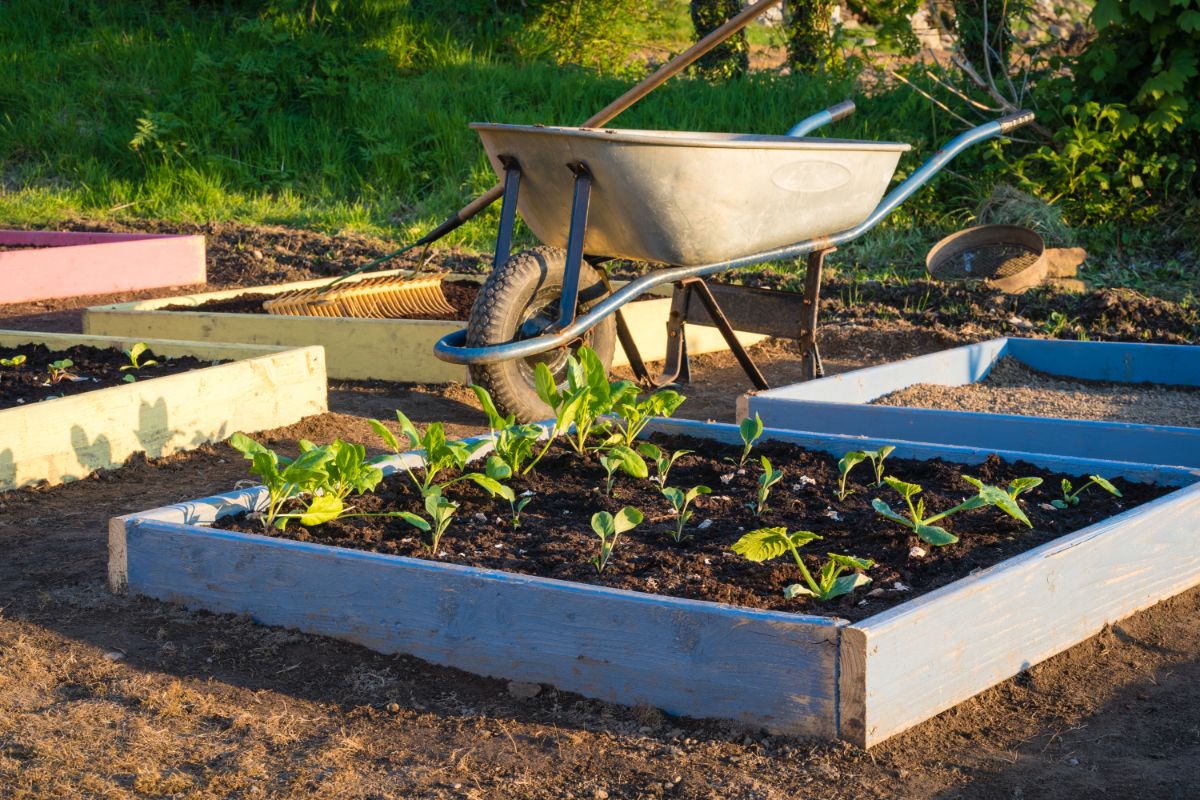
Creating your own square-foot garden isn’t difficult. You just need a few feet of growing space and a few simple supplies. Once your garden is constructed, it can be planted and tended just like any other garden bed.
Most square-foot gardens measure 4’ x 4’, which is a perfect size for easy weeding and tending your plants. If you have more growing space available, you can create multiple-square-foot gardens to give you even more space to grow your veggies.
One of the perks of creating multiple beds is that it will simplify crop rotation. Just keep track of what plants you grew in a particular bed and move those plants to the next bed the following growing season.
1. Build your bed
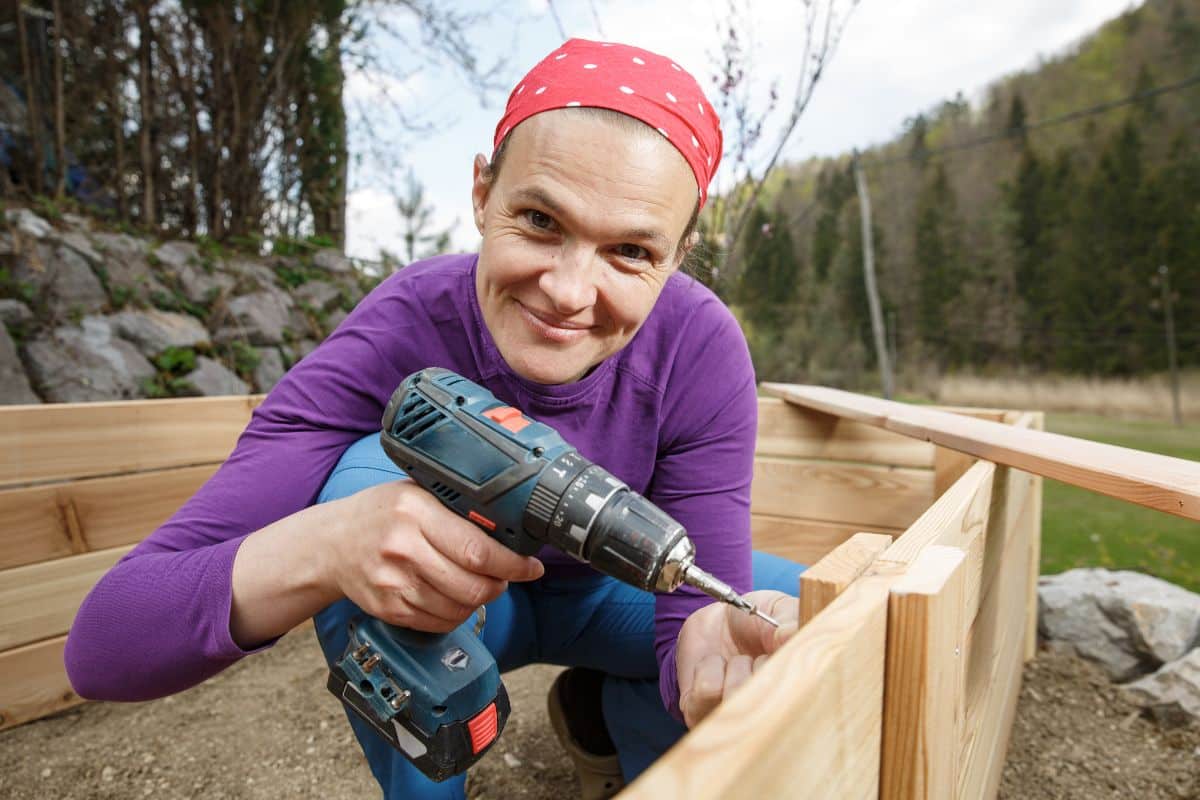
For the most budget-friendly option, you can create your own square-foot garden bed with a bit of scrap wood and a few screws. You can purchase a ledger board or other untreated lumber for the walls of your bed. If you’re using upcycled wood, make sure your materials are safe for food crops and haven’t been treated with chemicals or painted with lead-based paints.
Each side of your garden bed should be 4’ long. Anchor the sections together with exterior grade screws and consider adding bracing to strengthen your bed even further.
Depending on what plants you want to grow, you can vary the height of your garden bed walls. If you’re growing carrots or other root crops, beds should be at least 12 to 16” deep, but you can make them even deeper by building the walls up higher. Higher garden beds will be easier on your back and joints too.
If you don’t want to construct your own square-foot garden, you can find premade raised beds online or at your local garden center that will do the job for you! You can find beds in either wood or galvanized metal, and many of them are just the right size for square-foot gardening.
2. Lay down a weed blocker
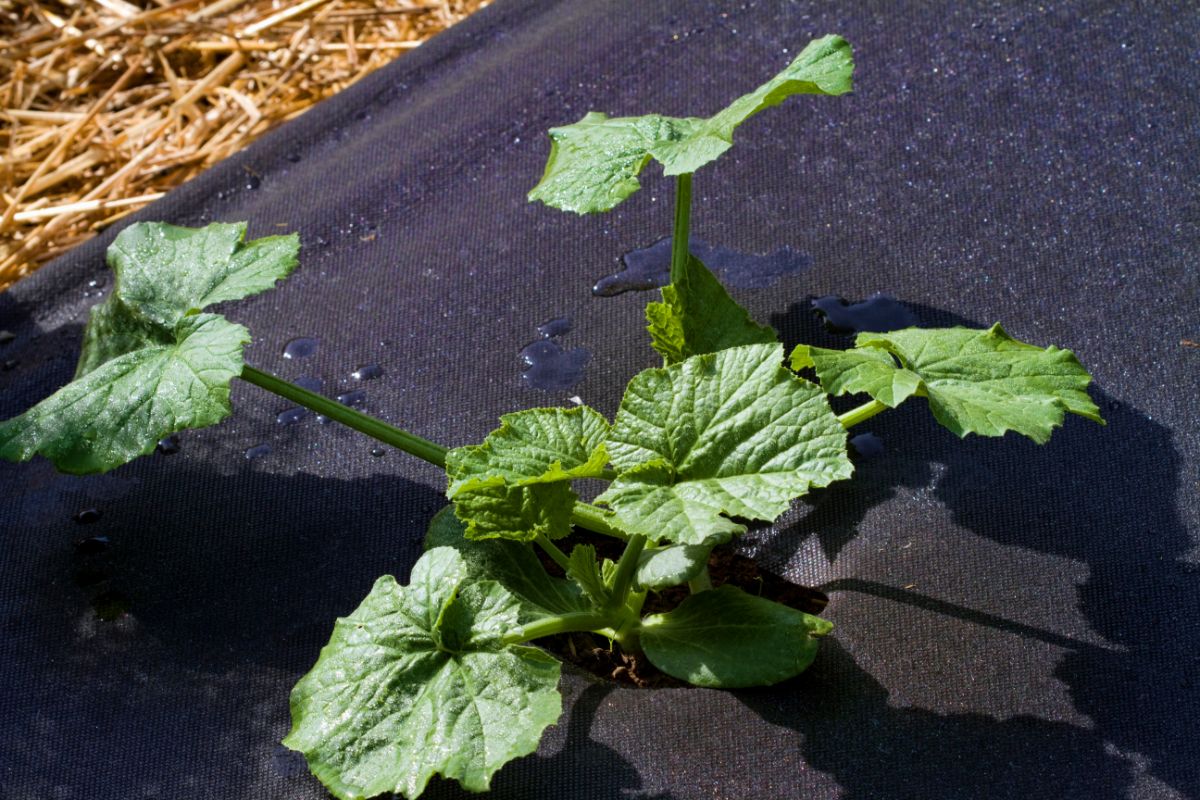
One of the many perks of square-foot gardens is that they usually have fewer weeds than traditional in-ground gardens. You can further weed-proof your garden design by adding a weed barrier at the base of your bed before you pour in your soil. Raised bed liners can work for this, but you can also just layer a few sheets of newspaper or cardboard on the bottom of your bed to smother out any weeds.
3. Add your soil
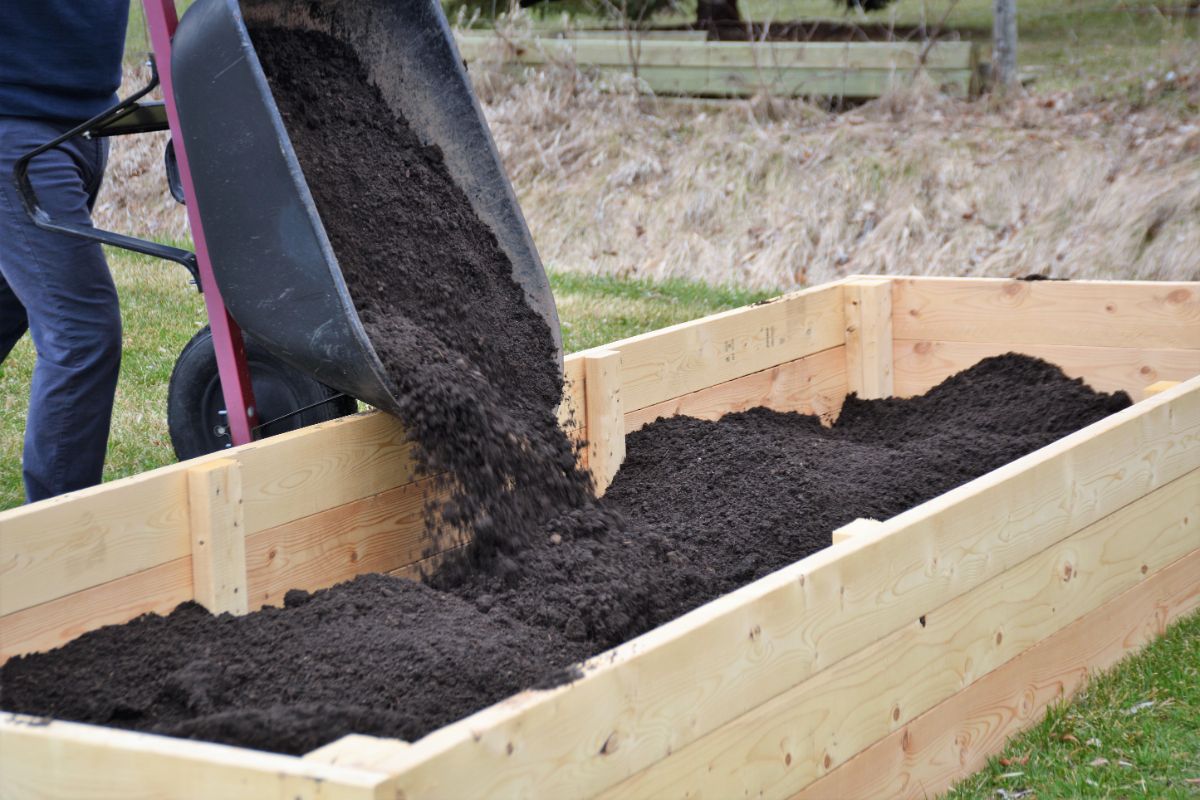
While it may be tempting to simply scoop up shovelfuls of soil from your yard to fill up your new beds, this is not the best approach. Standard garden soil is usually too dense for raised beds and will become further compacted when exposed to water and the elements. Garden soil also contains weed seeds and may harbor pest insects too.
Instead, opt for a premixed soil intended for raised beds. Or make your own raised bed soil by blending together equal parts of coconut coir, vermiculite, and compost. You’ll need 8 cubic feet of soil to fill a 4’ x 4’ bed.
4. Create a gridwork
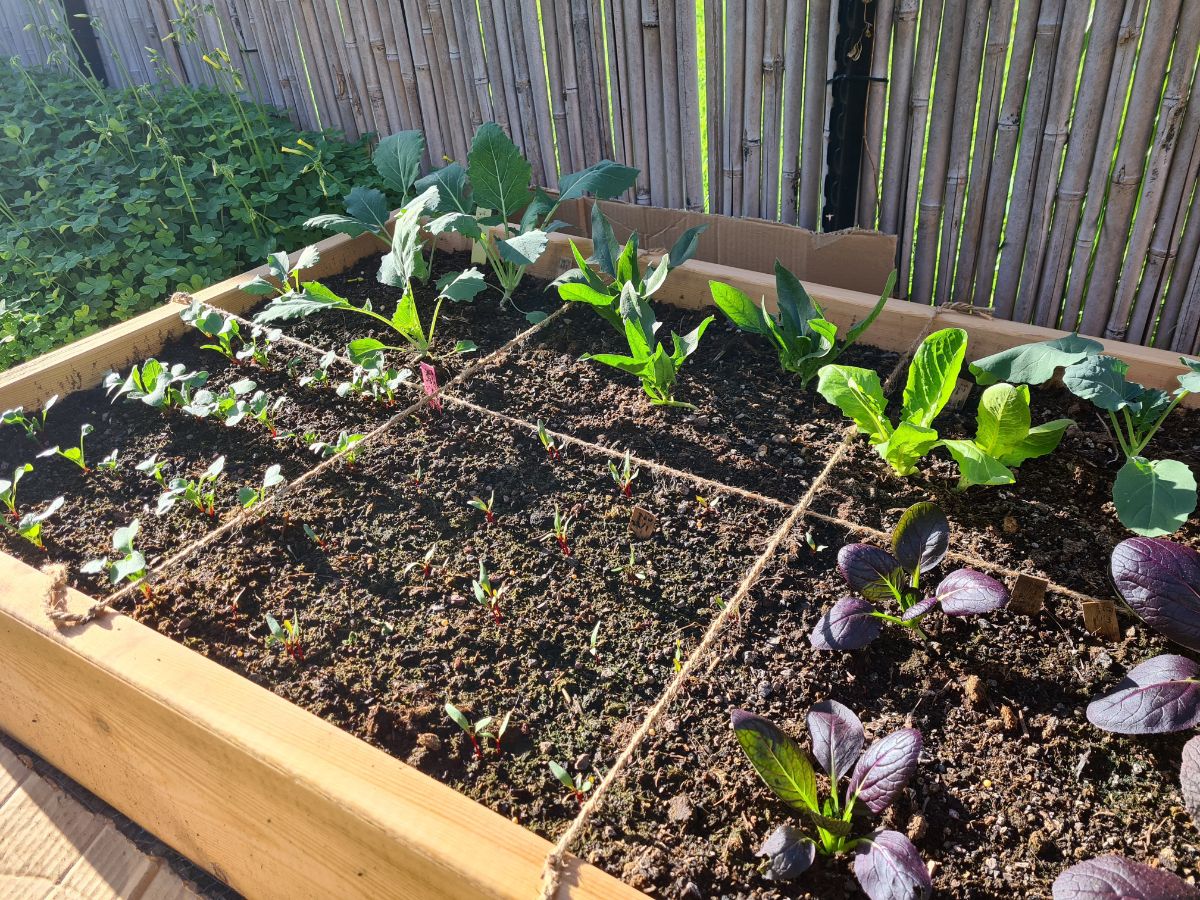
The primary element that separates square-foot gardens from other raised beds is the gridwork structure that delineates each square of garden space. This gridwork keeps your garden bed looking tidy and determines where plants should be sown and how many seeds should be planted in each square.
For a temporary option, you can simply use a homemade or premade grid template to lay out your squares. Or you can stretch cording or twine across your garden beds in a grid pattern.
A more permanent solution involves creating gridwork out of scrap lumber. Thin lath strips are often used for this; however, any untreated wood will work well. Wood strips can be secured together with small screws or nails or wrapped with weather-resistant cording.
As you overlap your gridwork, make sure that each square of your grid measures approximately 1’ square. This will give you the proper layout for your planting and improve the look of your bed.
5. Plan your bed
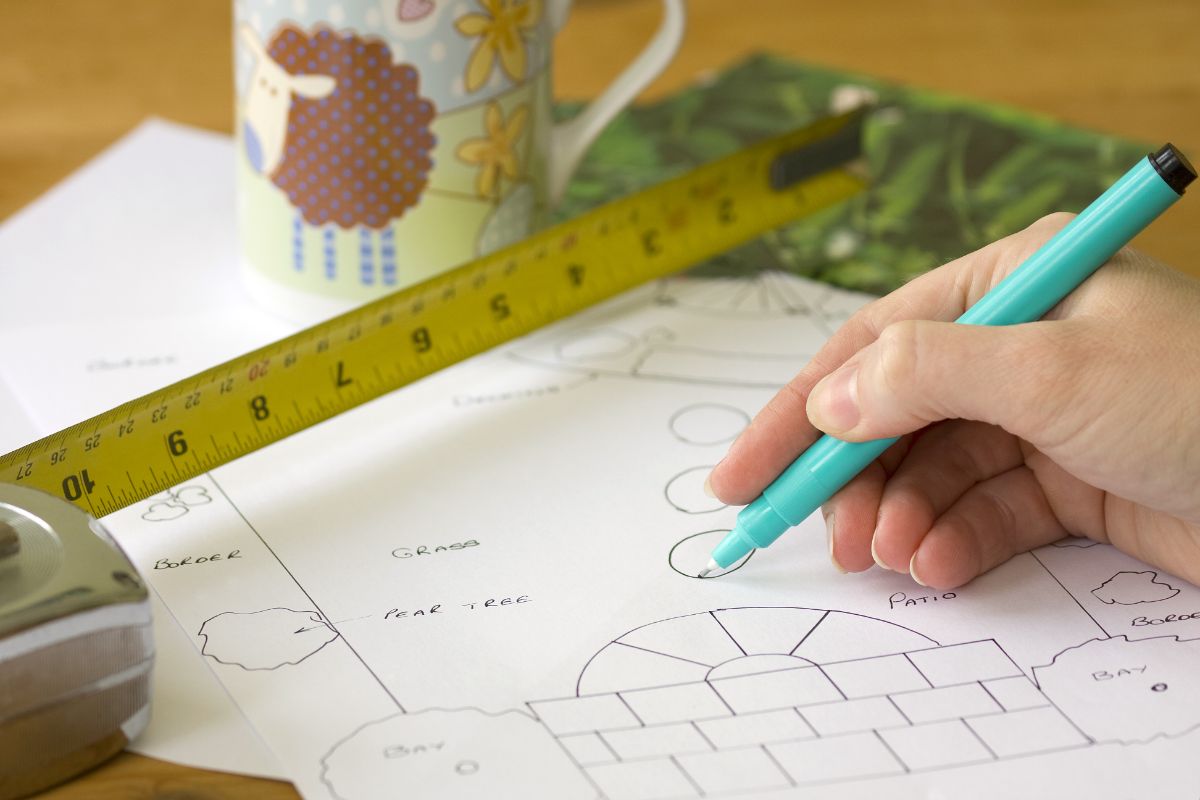
Once you’ve created your gardening grid, it’s time to start planning your garden design. However, there are a few key considerations to keep in mind.
- Plant choice.
Because square-foot gardens are so small, you need to make the most of your available growing space. That means only growing plants that you actually want to use. There’s no point in saving a spot for fennel if you hate the taste of it!
Consider your weekly shopping budget and notice the vegetables, herbs, and fruit that you consume regularly. If those plants grow well in your climate, they can be the best choices for your square-foot garden.
- Plant height.
In the close quarters of a square-foot garden, short plants can get easily overshadowed by taller plants, which can stunt their growth and limit your harvest. To avoid this, research the mature height of the plants you’d like to grow and locate the taller plants on the north side of your garden. This will allow your shorter plants to still receive plenty of sun from the south.
Plants that require trellising, like beans, peas, and cucumbers, should also be located towards the north side of your garden, as tall trellises can cast shadows too!
- Companion plants.
It’s a good idea to keep the elements of companion planting in mind when designing your garden layout, as this can prevent pests from targeting your plants. Strong-smelling herbs, like rosemary, thyme, and marjoram, are naturally repulsive to many garden pests. Alliums, including onions and garlic, are also ideal for pest control.
Sowing these plants around the margins of your square-foot garden can protect more vulnerable plants nearby. You can also include flowering plants, like yarrow, chives, and dill, in your design, as these plants attract beneficial insects that prey on pests.
6. Sow your seeds and seedlings
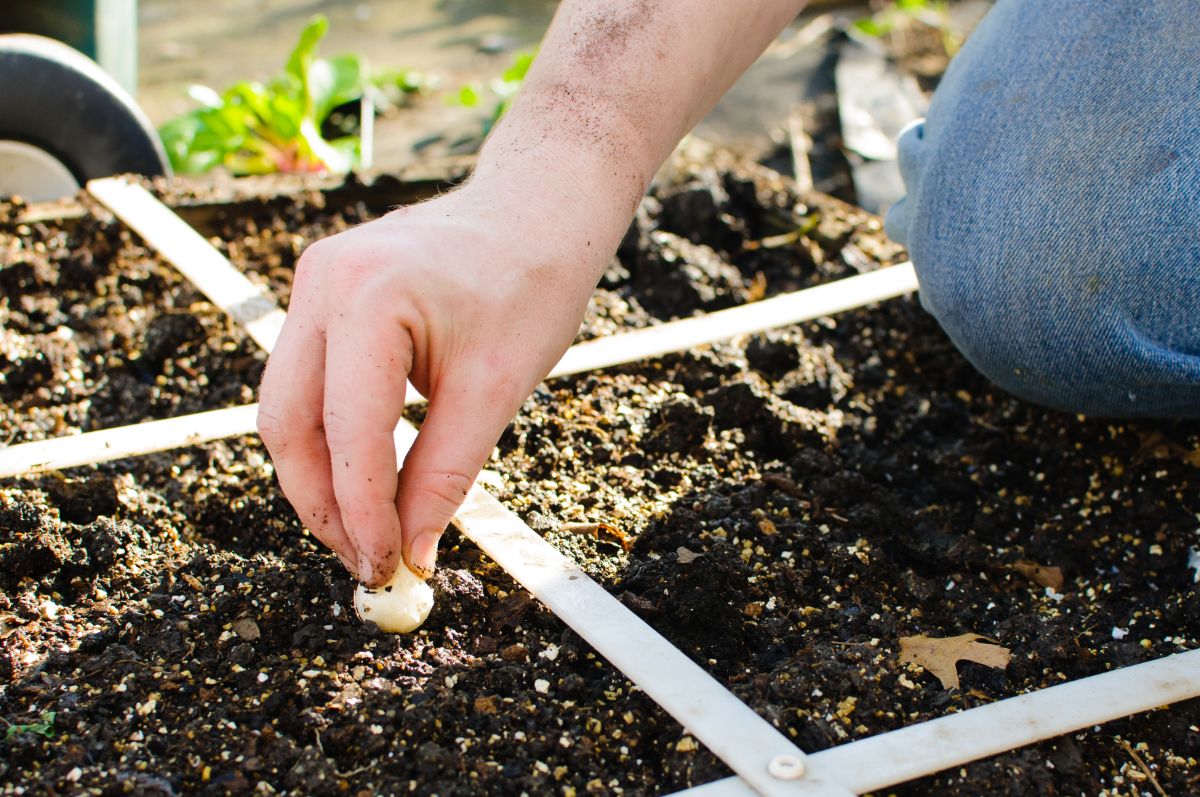
Once you’ve decided what plants you’d like to grow and where you want to place them, you’re ready to start planting. But you’ll need to keep plant size in mind to determine how many seeds or seedlings to sow in each square foot of your garden.
In square-foot gardening, plants are often divided into 4 sizes: small, medium, large, and extra-large.
- Small plants, like carrots and radishes, can be planted thickly together – about 9 to 16 plants per square.
- Medium plants, such as spinach and beets, need a bit more room, but you can fit approximately 9 of them per square.
- Larger plants, like some lettuces and Swiss chard, can be planted 4 per square.
- And extra large plants, like tomatoes and peppers, should be grown singly in a square by themselves.
For more planting suggestions, you can find proper spacing recommendations in the Square Foot Gardening book or check out this handy chart.
Beyond plant size, it’s also a good idea to plant a variety of different plants in your square-foot garden to avoid creating a monoculture. Plants in the same family are susceptible to the same pests and diseases, but if you sow a wide variety of plants, you increase the likelihood that at least some of your plants will survive any troubles that emerge during the growing season.
Both seeds and seedlings can be sown in your square-foot garden. If you choose to grow your plants from seed, sow 2 to 3 seeds per planting hole and then thin out your seedlings once their true leaves emerge. This will ensure that you are growing the sturdiest and healthiest plants in your garden bed.
Note: While most vegetables and herbs can be grown successfully in square-foot gardens, very large plants may not be the best choices for this garden type. Pumpkins, mint, and horseradish all tend to sprawl, and they may take over a smaller garden. Instead, try sowing these plants in nearby containers and train pumpkin vines to grow across your lawn and away from your garden.
7. Tend your plants
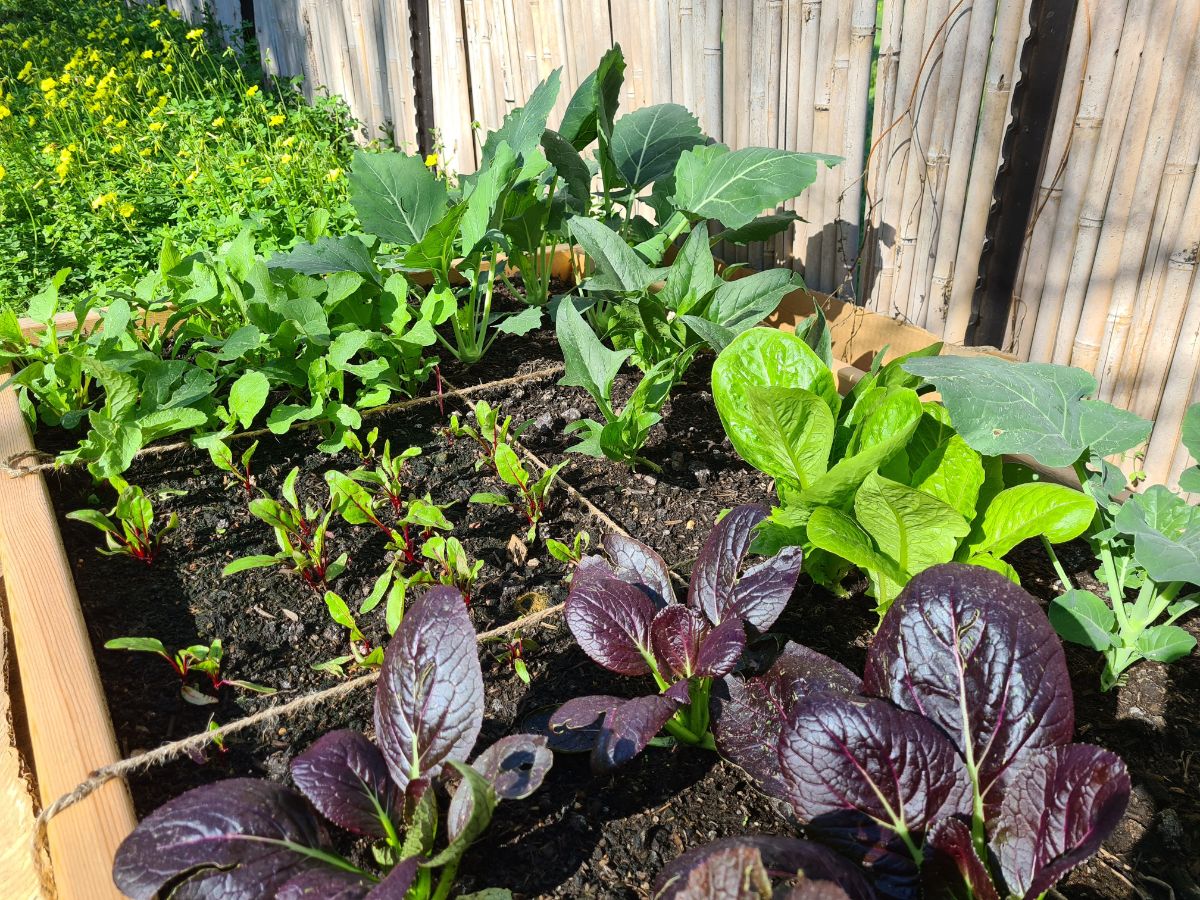
After your square-foot garden has been planted, you just need to tend it like any other garden bed. That means watering regularly, adding fertilizer as needed, and keeping on top of pests and weeds.
Because square-foot gardens are planted thickly, they naturally repress most weeds, but some weeds may still pop up. To keep this from happening, you may want to add a layer of organic mulch, like weed-free straw or compost. Adding mulch will also retain moisture in your soil, so you won’t need to water as much.
One thing to keep in mind with square-foot gardens is that heavy-feeding plants, like potatoes and tomatoes, may rob nutrients from the soil of surrounding plants. To prevent this from happening, be sure you add as much fertilizer as your plants need to grow happily. Mixing in compost at the beginning of the growing season will also improve your soil and provide a ready source of nutrients for the months ahead.
Frequently asked questions
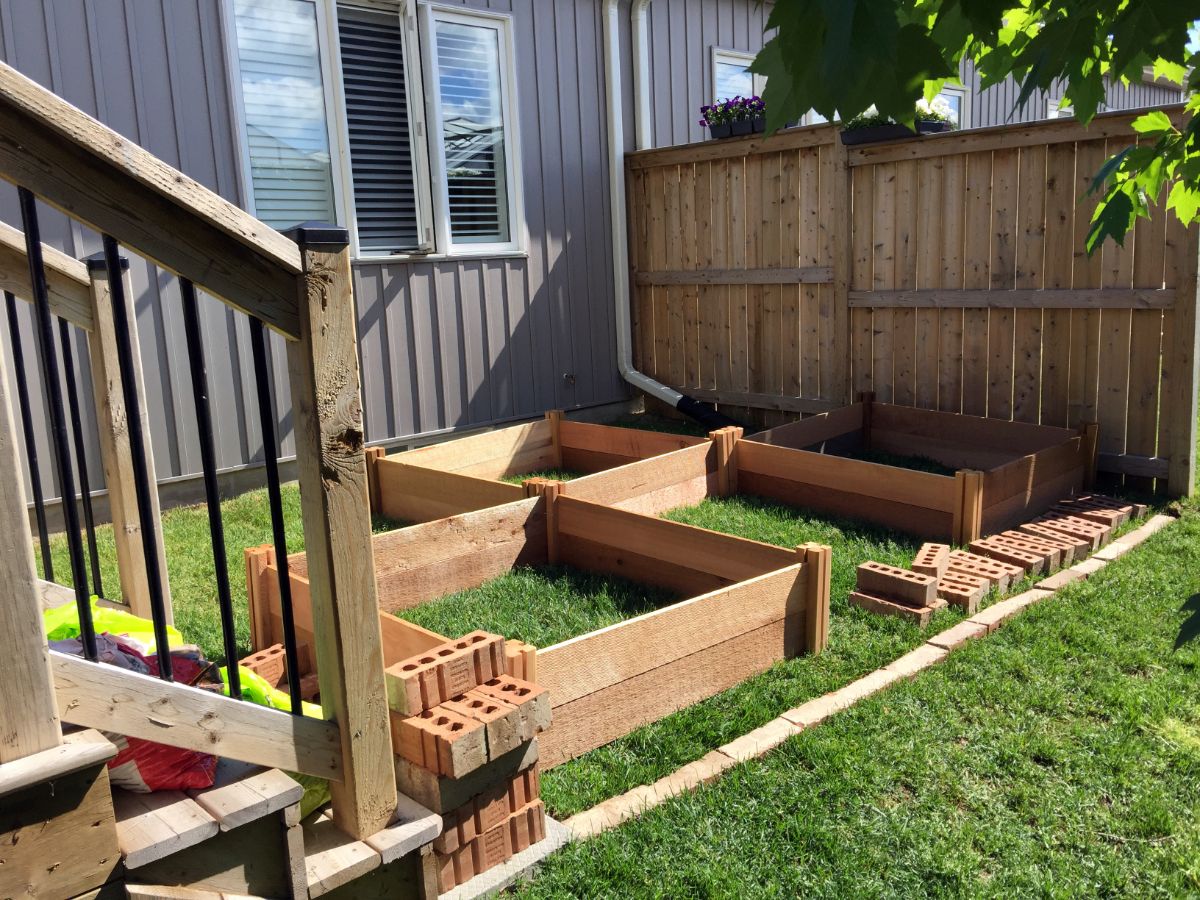
To avoid pests and diseases, many vegetables should be rotated on a 3 to 5-year schedule. This can be accomplished in square-foot gardens by avoiding planting the same plants year after year. You can also build multiple beds and rotate your crops in between them.
In the past, it was recommended that square-foot garden beds be at least 6” deep. However, this depth is rather shallow for many plants, especially root crops. If you’re growing root vegetables, plan on creating a bed that is at least 12” deep.
Yes, tomatoes can be kept in square-foot gardens. Only sow one tomato plant per square foot of gardening space. Choosing indeterminate tomatoes can also be helpful, as these plants grow vertically and can be kept more compact with tomato cages and frequent pruning.
You don’t need to mulch square-foot gardens, but adding a layer of organic mulch can offer some benefits. Mulch will keep weeds down and also boost moisture levels in your garden, so you won’t need to water as much. As the mulch breaks down, it will also add nutrients to your garden soil to promote healthier plant growth.
About 9 bulbing onions can be planted per square foot of growing space. Green onions, on the other hand, are smaller and can be planted 16 per square. Locating your alliums towards the exterior of your garden bed can help repel destructive insects and keep your garden pest-free.
Most untreated, natural woods can be used to construct the framework of your square-foot garden. For most gardeners, cedar is the wood of choice because it is naturally water-resistant and will hold up to the elements. Pine is also another great pick since it’s easy to find and budget-friendly.
Summary
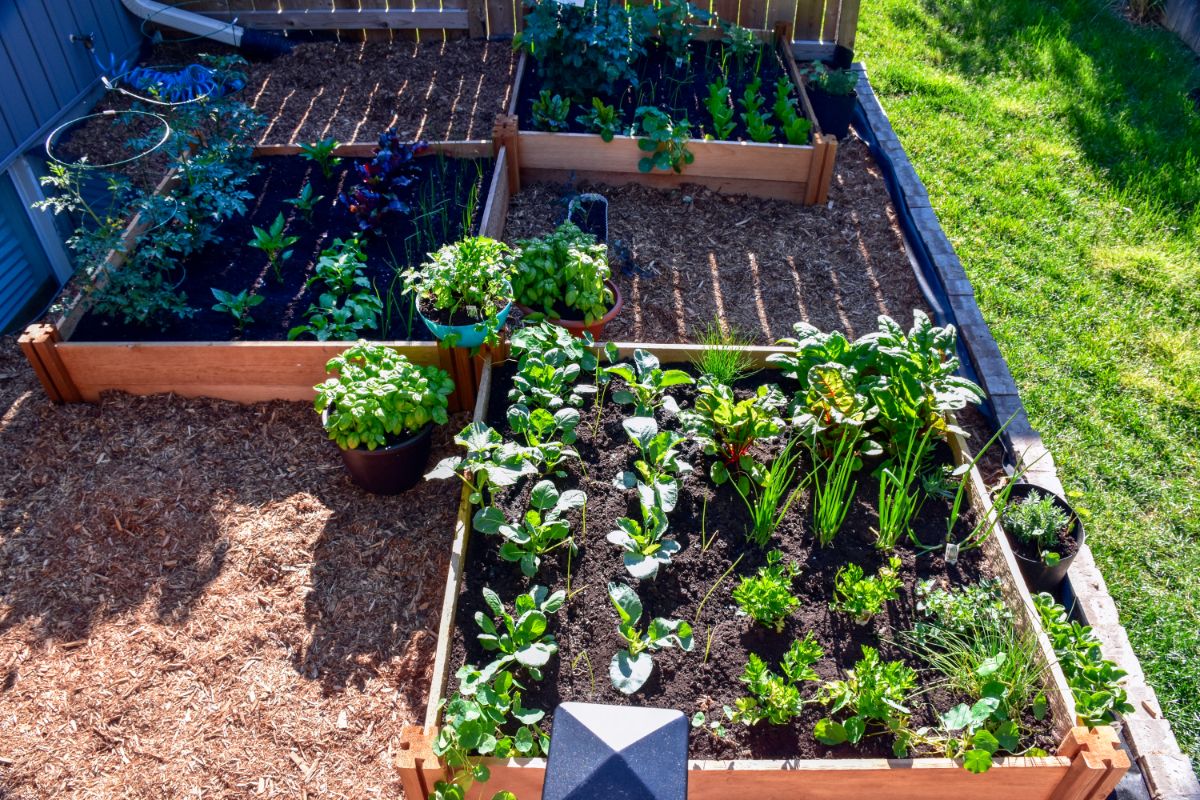
Square-foot gardening is a smart way to put small spaces to good use. By understanding plants’ proper spacing requirements and which plants grow best together, you can design a thriving small garden that provides all of the veggies you need.
If you want to get more creative with your square-foot garden or you have the space for a few beds, you can even create a series of themed square-foot gardens. A square-foot herb garden, salad garden, or salsa garden are all easy enough to grow, and they’ll make for fun conversation starters when guests visit your home.
For more small-space gardening ideas, check out our guide on growing ginger in containers.

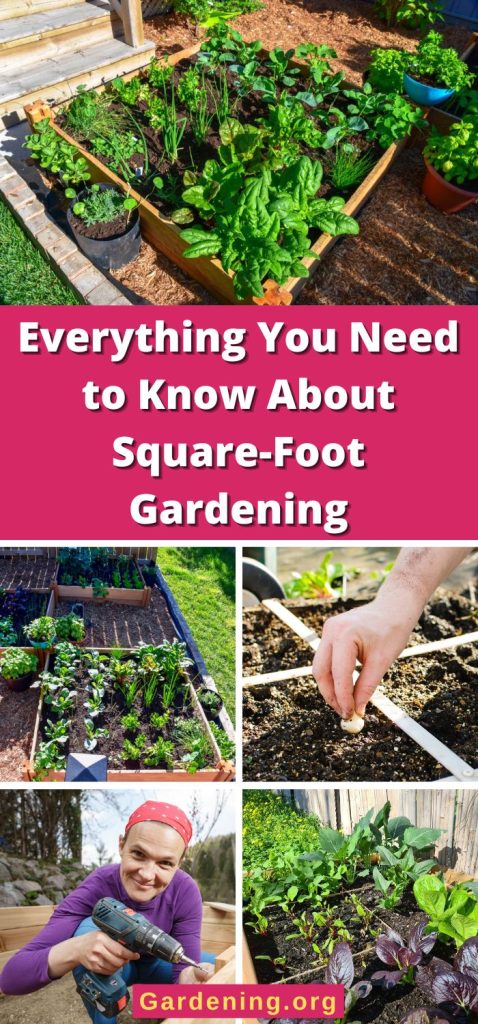
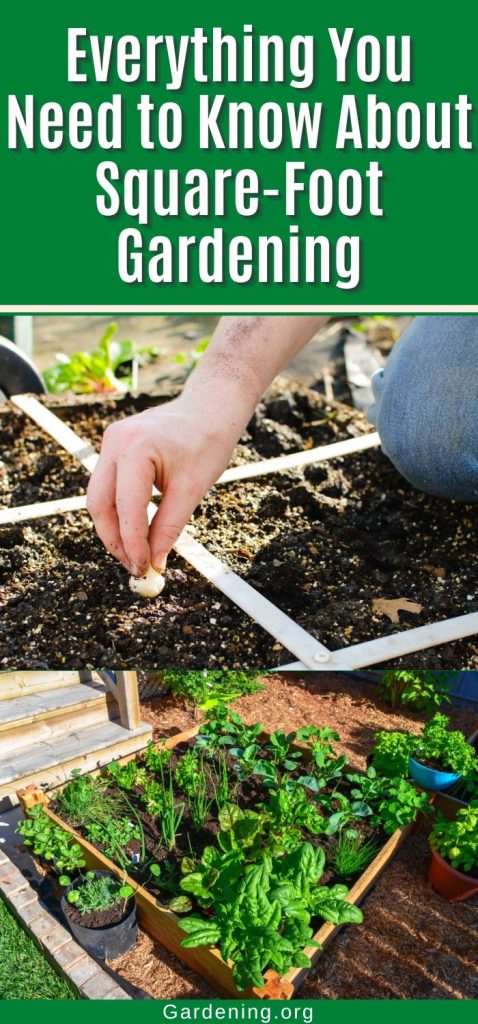
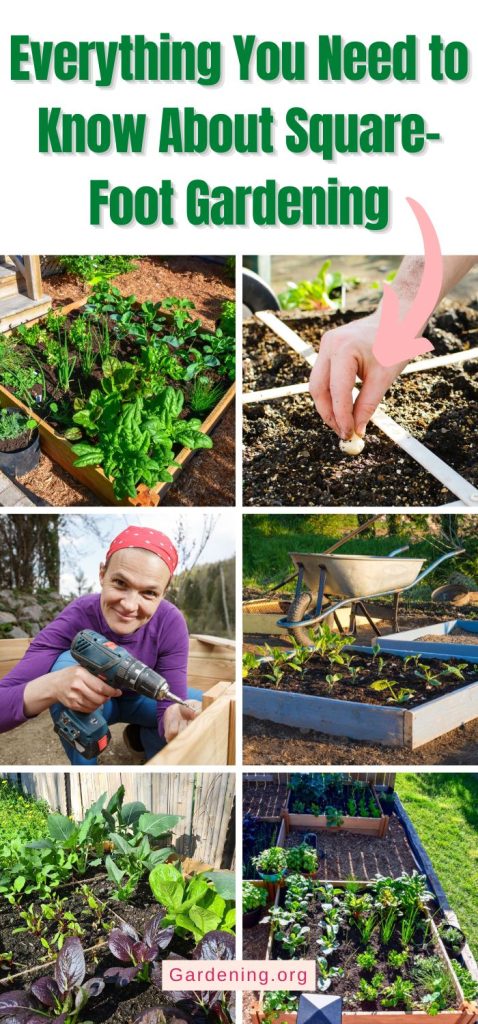
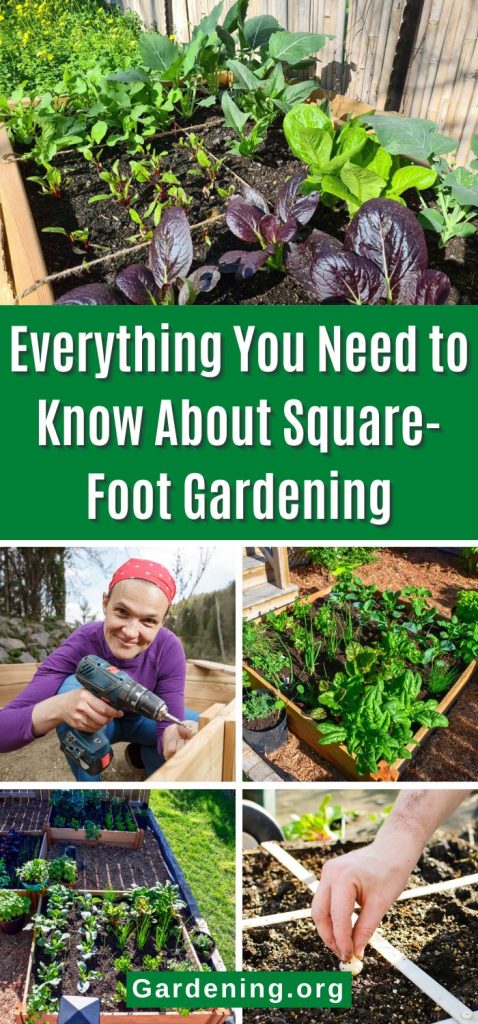




Tessa Hudson
you didnt mention anything about watering
Mary Ward
Watering is the same as for gardens and raised beds. General rule is one inch of water per week, either from natural rain or watering. You can alter this to suit the needs of the kinds of plants you choose to grow. Good luck!